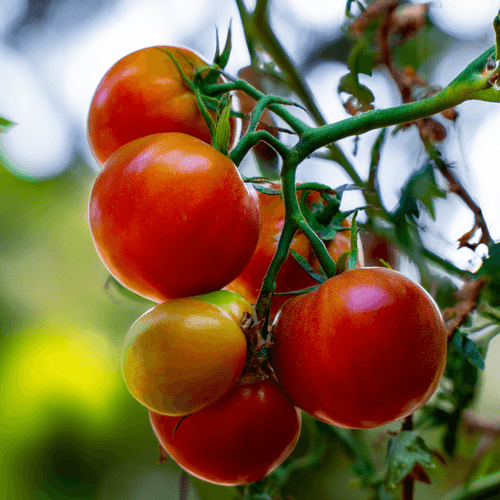Did you know ?
- 1 Tomatoes are 94% water by weight.
- 2 They were once sold as ornamental plants in 16th-century Europe.
- 3 Commercial greenhouse tomato cultivation began in the 19th century.

The tomato is a juicy, tangy-sweet fruit often treated as a vegetable in cuisines worldwide. Versatile in color and shape — from tiny cherries to large heirlooms — it adds flavor fresh or cooked. Rich in antioxidants, vitamins, and water, tomatoes boost both nutrition and taste.
Did you know ?
View other Fruit vegetables
Nutrition
| Calories | 22 kcal |
| Proteins | 1.1 g |
| Carbohydrates | 4.8 g |
| of which sugars | 3.2 g |
| Fiber | 1.5 g |
| Fats | 0.2 g |
Ripeness
Selection
Storage and ripening
If you bought unripe tomatoes, here's how to speed up the process :
Health
Origin
Originating in the Andes of South America, wild tomatoes were first domesticated in Mexico. Introduced to Europe in the 16th century, they were initially ornamental before culinary acceptance. Over centuries, tomato cultivation spread globally, adapting to diverse climates.
Recipes
Gallery
There is no images yet. Submit one now to contribute to the gallery !
F.A.Q
Warnings
Husk-covered and tangy, used in green sauces.
Hollow interior, crisp texture, sweet flavor.
Similar color but sweeter, with firmer flesh.